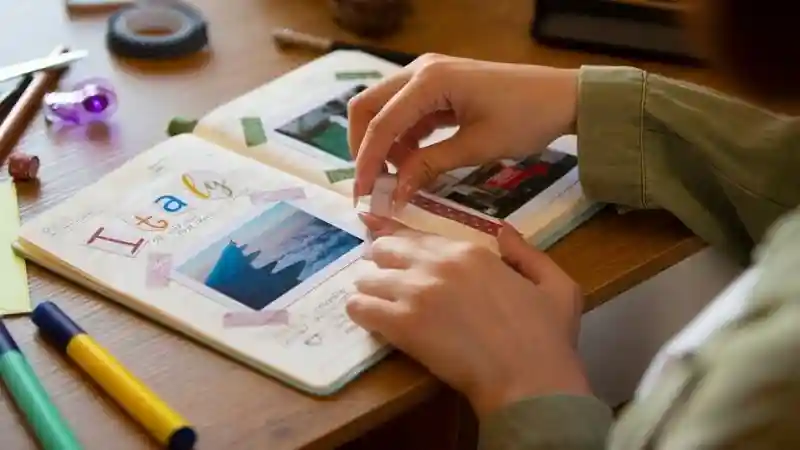Even in the digital age, brochures have remained a significant tool in the marketing and communication world. Behind every eye-catching, informative booklet is a competent designer who converts raw ideas into polished, compelling content.
These booklet designer experts combine strategic thinking with creativity to develop works that successfully communicate ideas to readers.
The journey from concept to completion involves multiple steps with a particular set of skills. While pushing creative boundaries, designers must balance client expectations, brand guidelines, and target audience preferences. Their work combines visual flair with practical considerations like readability and production constraints.
Role of a Booklet Designer
A booklet design company plays a key role in crafting effective brochures. Skilled designers blend artistry and strategy to create pieces that grab attention and convey information. Their expertise spans layout, color theory, typography, and visual storytelling.
1. Initial Consultation and Research
The brochure design process is a thorough conversation between the designer and the client. In this stage, the booklet designer conducts in-depth research to fully grasp the objectives, target market, and core messaging of the project.
They may inquire about brand policies, look through information from rival companies, and investigate market trends. The project as a whole is shaped by this foundational effort. It guarantees that the finished result reflects the client’s vision and appeals to readers.
2. Conceptualization and Sketching
Armed with insights, the designer moves into the creative phase. They sketch rough layouts, experiment with different visual approaches, and brainstorm unique ways to present information.
This stage is about exploration – pushing boundaries while considering practical constraints. Designers might create mood boards to convey the overall feel they aim for, helping clients visualize potential directions.
3. Layout Development
Once a general concept gets approved, the booklet designer refines the layout. They give thought to how the content flows. They balance text and images to direct the reader’s attention through the brochure.
This entails choosing column layouts, page organization, and where to put essential components, like call-to-action boxes and headers. The idea is to construct a coherent, aesthetically pleasing framework that strengthens the content.
4. Typography and Color Selection
To create a color palette that reinforces the brand identity and evokes the desired emotional response, designers need to experiment. They experiment with different combinations until they find the perfect balance. Choosing the right fonts and colors is essential for setting the tone of the brochure.
5. Image Curation and Creation
Visual elements bring a brochure to life. Designers source high-quality photographs, create custom illustrations, or develop infographics to support the text. They might art direct photoshoots or work with illustrators to ensure visuals align perfectly with the overall concept. Each image is carefully chosen or created to enhance the message and appeal to the target audience.
6. Collaboration and Iteration
Company designers of booklet design companies work closely with other team members throughout the process. They collaborate with copywriters to ensure text fits seamlessly into the layout. Marketing teams provide input on key messages and call to action. The designer presents concepts and drafts to the client, gathering feedback and making revisions. This back-and-forth refines the brochure, often leading to several iterations before reaching the final design.
7. Technical Preparation
As the design nears completion, the focus shifts to technical details. Designers ensure all elements are in the correct color space for printing, check image resolutions, and create trim areas. They might develop both print and digital versions, optimizing each for its specific medium. This attention to technical aspects guarantees a high-quality final product.
8. Proofing and Finalization
The last stage involves meticulous proofing. Designers review every aspect of the brochure, from spelling and alignment to color accuracy. They might create physical mock-ups to test how the piece feels in hand.
The booklet design company designers make final adjustments based on this thorough review. Once approved, the designer prepares the files for production. They work closely with printers to ensure the vision translates perfectly to the finished product.
The journey from idea to completion demonstrates the variety of roles that booklet designers can play. Their skill combines technical know-how with artistic vision to produce brochures that successfully convey their message while also looking engaging.
Conclusion
The impact of thoughtful design extends far beyond aesthetics. Well-crafted brochures can strengthen brand identity, simplify complex information, and motivate readers. In a world overflowing with digital content, a physical brochure offers a tangible connection that can leave a lasting impression.
Throughout the process, booklet designers wear many hats. They act as researchers, artists, problem-solvers, and collaborators. Their ability to translate abstract ideas into visually compelling layouts sets the foundation for effective communication.
Their work transforms simple information into powerful marketing tools, helping businesses and organizations connect with their target audiences. As communication continues to evolve, the expertise of designers is invaluable in delivering messages with clarity and style.
